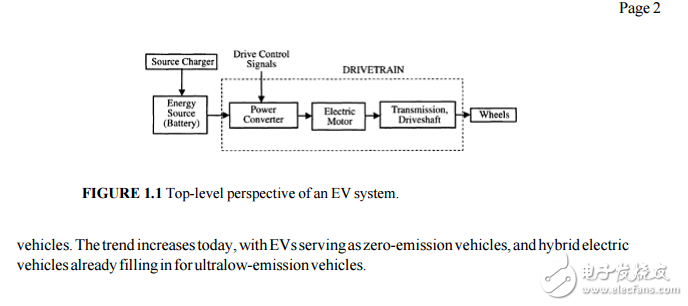
资料下载

电动和混合动力汽车
Environmental as well as economical issues provide a compelling impetus to develop clean, efficient, and sustainable vehicles for urban transportation. Automobiles constitute an integral part of our everyday life, yet the exhaust emissions of conventional internal combustion (IC) engine vehicles are to blame for the major source of urban pollution that causes the greenhouse effect leading to global warming.1 The dependence on oil as the sole source of energy for passenger vehicles has economical and political implications, and the crisis will inevitably become acute as the oil reserve of the world diminishes. The number of automobiles on our planet doubled to about a billion or so in the last 10 years. The increasing number of automobiles being introduced on the road every year is only adding to the pollution problem. There is also an economic factor inherent in the poor energy conversion efficiency of combustion engines. Although the number for alternative electric vehicles is not significantly higher when efficiency is evaluated on the basis of conversion from crude oil to traction effort at the wheels, it makes a difference. Emission due to power generation at localized plants is much easier to regulate than that emanating from IC engine vehicles (ICEV) that are individually maintained and scattered. People dwelling in cities are not exposed to power plant related emissions, because these are mostly located outside urban areas. Electric vehicles (EV) enabled by high-efficiency electric motors and controllers and powered by alternative energy sources provide the means for a clean, efficient, and environmentally friendly urban transportation system. Electric vehicles have no emission, having the potential to curb the pollution problem in an efficient way. Consequently, EVs are the only zeroemission vehicles possible. Electric vehicles paved their way into public use as early as the middle of the 19th century, even before the introduction of gasoline-powered vehicles.2 In the year 1900, 4200 automobiles were sold, out of which 40% were steam powered, 38% were electric powered, and 22% were gasoline powered. However, the invention of the starter motor, improvements in mass production technology of gaspowered vehicles, and inconvenience in battery charging led to the disappearance of the EV in the early 1900s. However, environmental issues and the unpleasant dependence on oil led to the resurgence of interest in EVs in the 1960s. Growth in the enabling technologies added to environmental and economic concerns over the next several decades, increasing the demand for investing in research and development for EVs. Interest and research in EVs soared in the 1990s, with the major automobile manufacturers embarking on plans for introducing their own electric or hybrid electric

声明:本文内容及配图由入驻作者撰写或者入驻合作网站授权转载。文章观点仅代表作者本人,不代表电子发烧友网立场。文章及其配图仅供工程师学习之用,如有内容侵权或者其他违规问题,请联系本站处理。 举报投诉
- 相关下载
- 相关文章






